A woman in her mid-70s with 2 defects after Mohs surgery for basal cell carcinoma, one at the base of her ala, and one on her medial cheek. It is best to address these as 2 separate aesthetic units, as we view faces in patterns. If these were repaired with one graft of one flap, it would not fool the eye. She would not pass “ the little girl test”.
I repaired the cheek defect along the nasolabial crease, where the eye expects to see a line. Using some of the skin and fat that would have been discarded, I placed a skin-fat composite graft to the defect on the ala. At 4 months, it is difficult to notice, even from a close distance. The discerning eye will notice that on the surgical side, the nasolabial crease looks more youthful than on the non-surgical side, but this does not stand out. A nice reconstruction, treating the areas a 2 separate aesthetic defects.
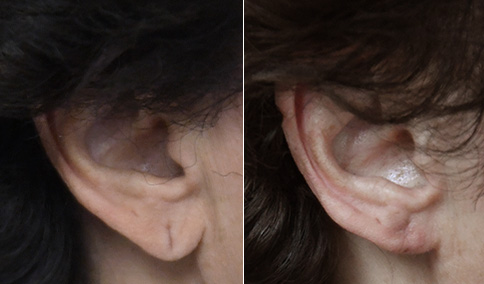
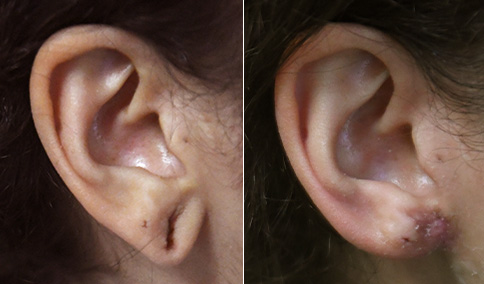
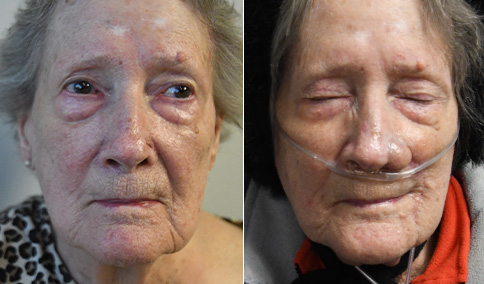
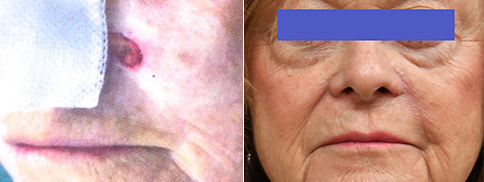
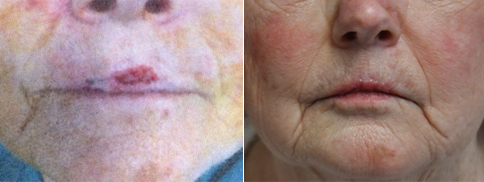
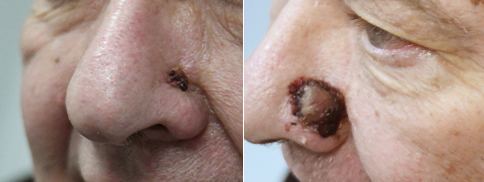
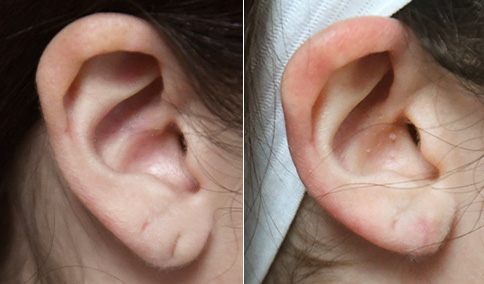
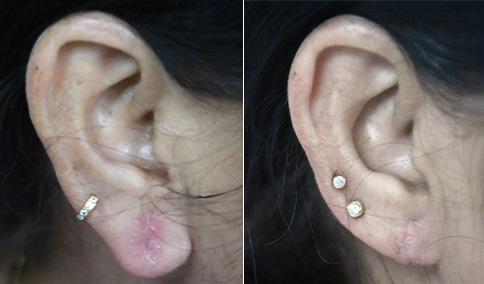
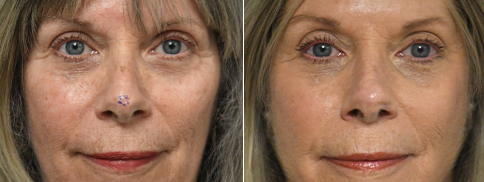

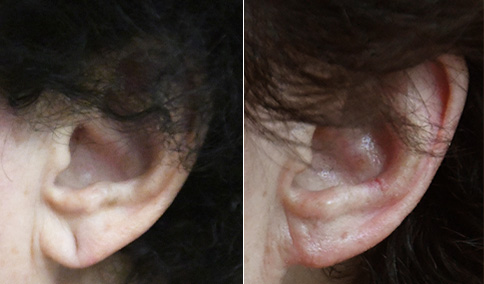
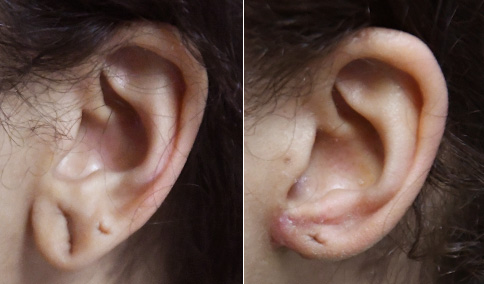
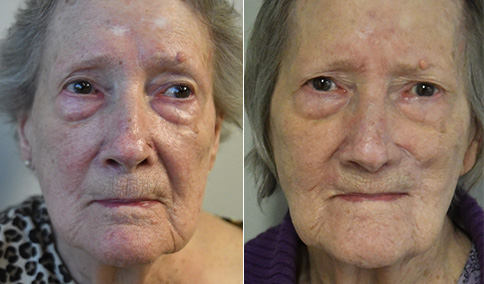
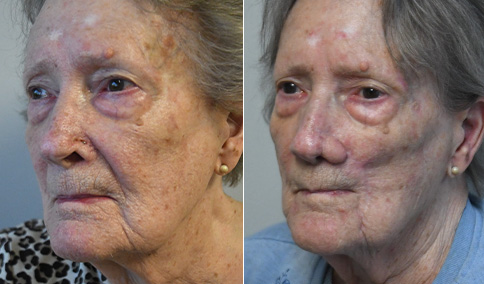
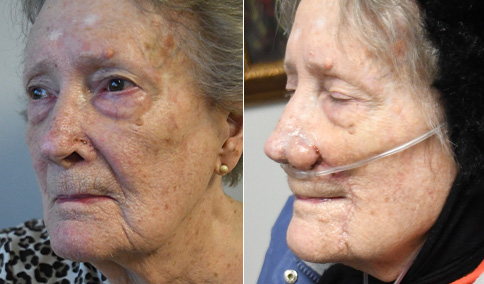
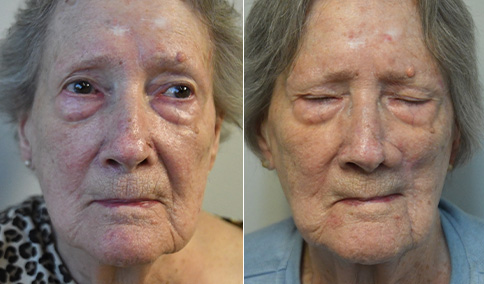
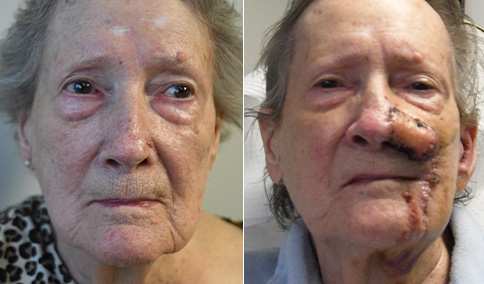
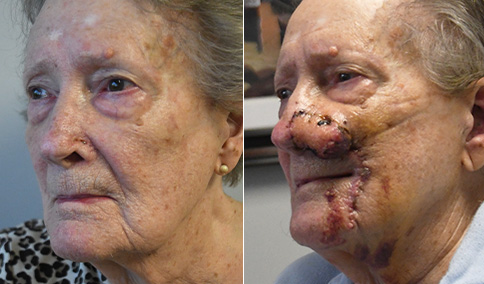
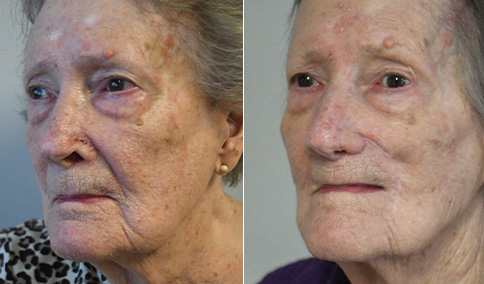
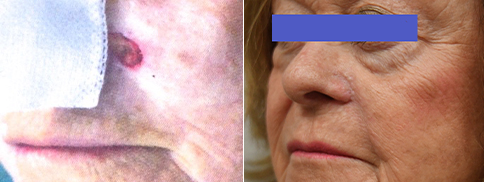
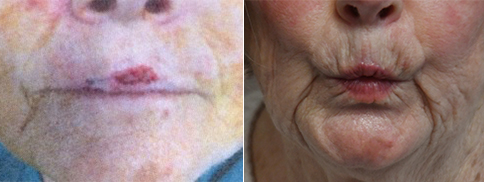
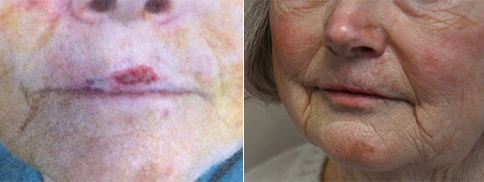
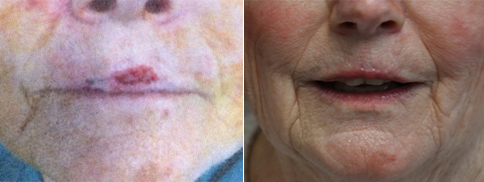
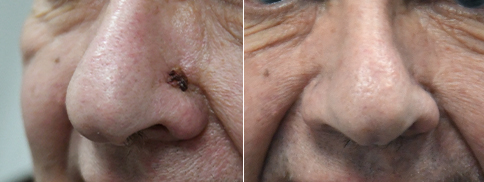
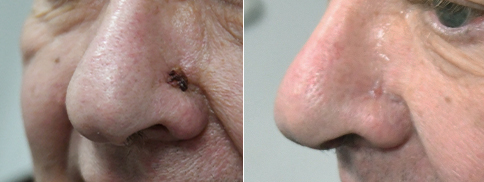
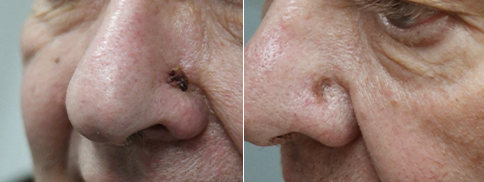
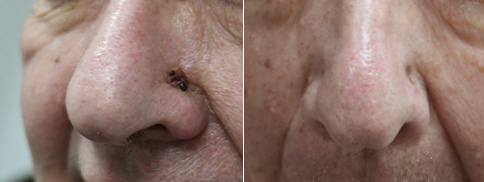
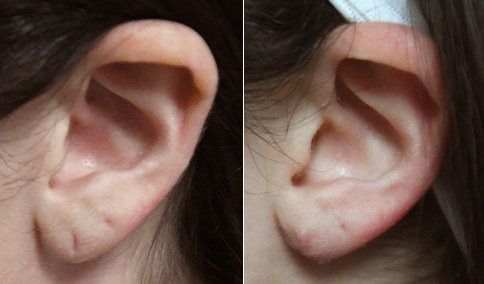
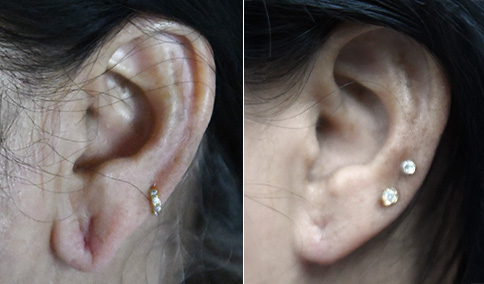
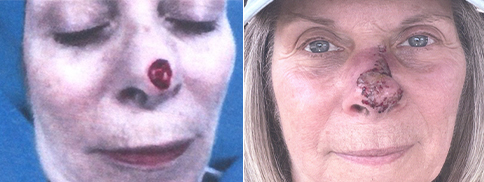
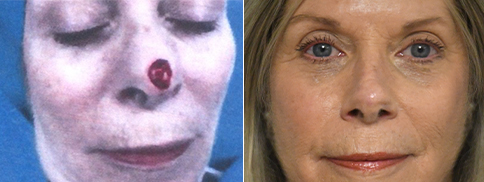
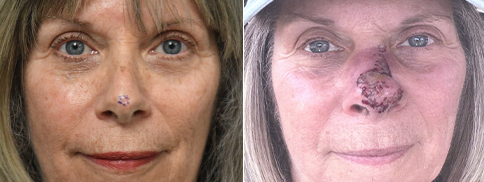
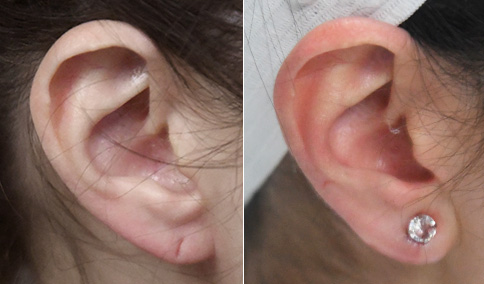




Cosmetic & Plastic Surgery Specialist
"I treat my patients like I would treat
- Jonathan D. Hall, MD, FACSmembers of my own family."
Schedule Consultation